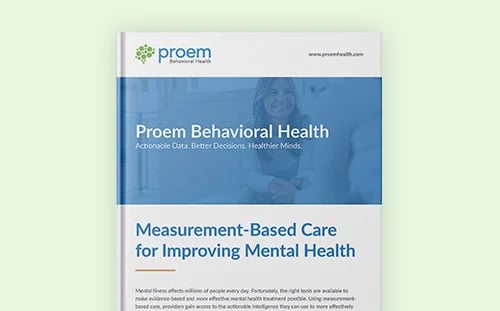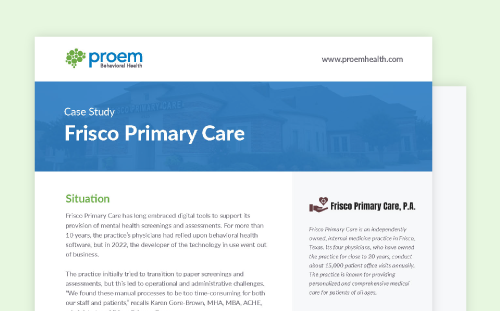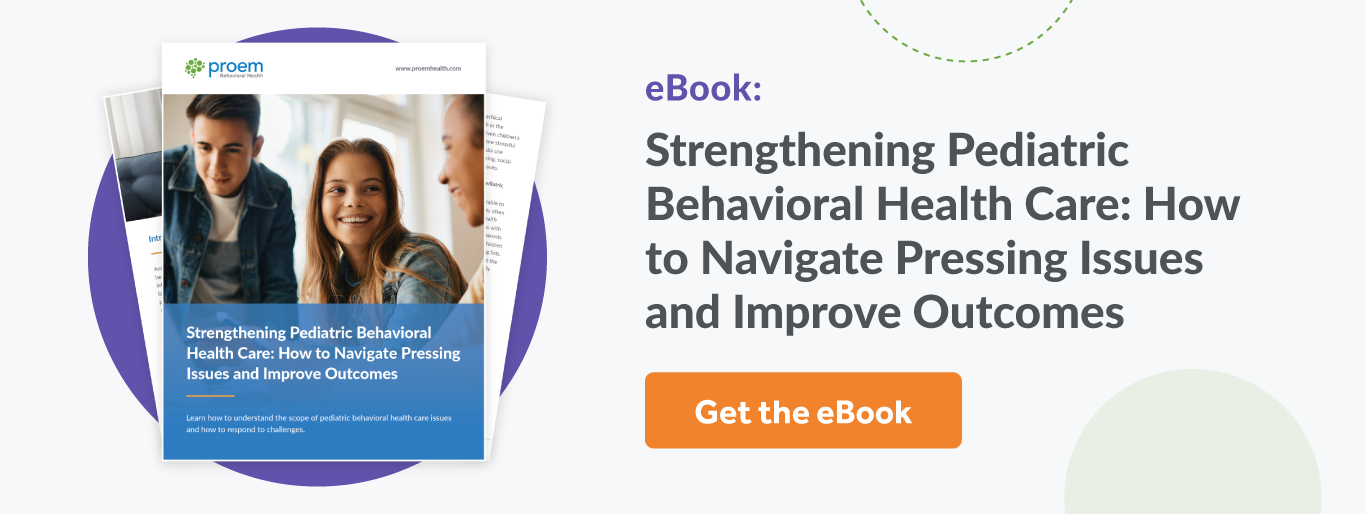The mental health crisis is not new. In fact, it's been with us for a very long time. But over the past few years, in conjunction with the COVID-19 pandemic, the number of people with mental health conditions has increased and people are more aware that there is a mental health crisis that greatly affects people of all ages, including children and adolescents. Early identification and diagnosis of mental illness can get children and adolescents on a treatment path that can have long-term, positive impacts on their quality of life.
According to National Alliance on Mental Illness (NAMI), “Research shows that one in six youth/adolescents will experience a mental health condition in any given time.” Further, NAMI reports that “50% of all lifetime mental health conditions begin before the age of 14 and 75% start before the age of 24.”
Thanks to the growing awareness of the mental health crisis, children’s mental health services are receiving more attention. It's understood that by improving our ability to identify, diagnose and treat mental health disorders, we can improve the quality of life for those with mental illness. That is especially true for children with mental illness. Unfortunately, a number of barriers to mental health care access for children still exist.
The Barriers to Mental Health Care Access for Children and What Can Be Done
Let's take a closer look at some of the key barriers and how we can begin working to overcome them.
Most Children Don’t Get Screened for Anxiety or Depression
Historically, most children have not been screened for anxiety or depression, so their needs may go unnoticed and become worse over time. Furthermore, children’s mental health services are often lacking, difficult to access, poorly understood and costly.
More attention is being paid to behavioral health for kids due to the impacts of COVID-19 and social media on children’s mental health, increased coverage by the media and greater attention from lawmakers. One of the results of this increase in attention is a greater push for children and adolescents to undergo routine mental health screenings and assessments. Why are pediatric assessments important? They offer an opportunity for early detection of mental disorders and faster treatment.
The U.S. Preventive Services Task Force (USPSTF) has recommended all children and adolescents 8 to 18 be screened regularly for anxiety. Screening for depression and suicide among children is also gaining attention, and improved options to perform screenings and assessments are emerging. Expediting and streamlining the screening and assessment processes through technology offers opportunities for improved access and earlier diagnosis and treatment.
Behavioral Health for Kids Doesn’t Receive Adequate Attention
Disorders in children have not traditionally received as much attention as disorders in adults. This can be attributed to some extent to the difficulty in identifying behaviors that may be a natural part of growing up (e.g., being easily distracted, being subject to mood swings) and parents (or guardians) not knowing when to seek help. Consequently, parents often don’t seek — or aren’t even aware of — the children’s mental health services that are available.
Raising awareness of the potential for mental health concerns among children and the availability of services to help them are important starting points. Healthcare professionals, especially primary care providers and pediatricians, can play a vital role here. School systems can also be a source of information for families about what is typical behavior and what behavior might suggest a concern that should be assessed.
There Aren’t as Many Assessment Tools Designed for Children's Mental Health Services
There are not as many assessment tools available that have been specifically designed for children compared to those available for adults. As awareness of the prevalence and significance of mental health disorders among children and adolescents grows, more tools are being developed to help parents, educators and providers identify when an issue or behavior may warrant concern. Fortunately, we are also seeing more tools moving from research into clinical use by pediatricians.
Primary Care Providers Lack the Information They Need Concerning Children’s Mental Health
Primary care providers typically represent “the front line of defense” in identifying and addressing mental health concerns among children. Yet they are often faced with competing pressures for their time and responsibilities, along with limited mental health care training and inadequate access to the tools that would allow them to play a more proactive and effective role.
Providing primary care providers with better access to screening and assessment tools and supporting them with behavioral health information and resources can empower PCPs and expand children's mental health services. Offering ready access to technology to help in screening and assessment can also contribute to greater use of these tools and increased consistency in providing children's mental health care.
Access and Cost Barriers to Mental Health Care for Children
Behavioral services can be costly and, by their nature, require treatment over an extended period. Lack of insurance coverage may also be a barrier for children of all ages to receive the mental health services they need. As NAMI notes, “A 2019 report found that a behavioral health office visit is over five times more likely to be out-of-network than a primary care appointment.” Out-of-network services, which are typically more expensive that those provided in-network, can represent significant barriers for children in low-income households.
High costs are a concern throughout healthcare, and there are efforts by lawmakers and organizations to help reduce the cost of care. Interestingly, one approach to children's mental health care that's been proven to lower cost is to expand the number of children who receive mental health services.
According to the American Academy of Pediatrics (AAP), “Experience has shown that improving children’s access to outpatient mental health services may actually reduce the cost of mental health care.” Another area of opportunity AAP points to is telehealth, or virtual visits: “There is growing evidence that non-face-to-face services are not only more cost-effective but also are preferred by families because of time constraints and convenience.”
Mental Health Care for Children Is Complex
Caring for children and addressing behavioral health for kids often requires participation and support from family members and school personnel (e.g., teachers, administrators, school counselors). It truly “takes a village” to address mental health issues among children, but ensuring everyone involved in a child's life is on the same page about the child's needs is often difficult.
Collaboration between parents, school systems and health providers, and between health providers (e.g., behavioral health specialists and pediatricians), around mental health can help reduce this complexity while better ensuring early identification of mental illness and timely treatment.
Some Demographics Have Not Historically Accessed Care as Frequently or Easily
Children living in poverty are at significant risk of mental health diseases while also less likely to receive treatment. According to an article published in Psychiatric Services, “This is due in part to living in communities with scarce resources and stressors, including community violence and crime, drug accessibility, unstable housing, unemployment, and food insecurity.” Access and costs barriers to mental health are particularly troublesome for younger populations. Access to mental health care for minorities is also a growing concern.
One way to begin overcoming these barriers may be to provide family support services in disadvantaged communities using a case management approach that could be delivered by family peer advocates, the Psychiatric Services article suggests. Another option that has been emerging since the pandemic is strengthening access to online therapies and treatment. Such an approach to care delivery has the potential to expand access and provide greater flexibility for families, particularly those with low incomes and who may lack reliable transportation, for example.
Recognizing the Uniqueness of Adolescent Mental Health Issues
In addition to the challenges concerning children's mental health that we’ve covered, it’s important to note that adolescents face some of their own specific challenges and barriers. Adolescents’ mental health issues are often different than those of younger children and thus deserve special attention. Radez et al. (2020) conducted a review of studies focusing on the barriers to help-seeking among adolescents and found that these barriers may be individual (e.g., not knowing where to seek help, a desire to cope with problems alone, motivational factors including depression), social (stigma related to mental health issues), perceptions of mental health professionals, and systemic and structural factors including lack of transportation and costs.
Helping Children With the Premier Pediatric Behavioral Health Solution
While there are substantial barriers to getting children and adolescents the mental health services and support they need, there also are powerful tools that can help overcome these barriers. This includes Proem's evidence-based software and tools. They're used by pediatricians and other healthcare professionals as well as research organizations around the world to help with the identification, treatment and monitoring of mental health disorders, including those of children and adolescents. Contact Proem to learn more about how we can help you better address the barriers to identifying and treating mental illness in children.





.png)










